Collaborative tourist snaps
For her Photo Opportunities project, Corrine Vionnet finds tourist photos of famous landmarks online and layers them to make images like this:
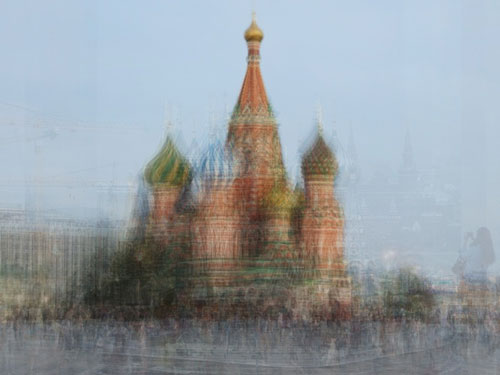
(thx, reed)



This site is made possible by member support. 💞
Big thanks to Arcustech for hosting the site and offering amazing tech support.
When you buy through links on kottke.org, I may earn an affiliate commission. Thanks for supporting the site!
kottke.org. home of fine hypertext products since 1998.
For her Photo Opportunities project, Corrine Vionnet finds tourist photos of famous landmarks online and layers them to make images like this:

(thx, reed)
But we’ve got to wait a whole year…the exhibition opens on Feb 26, 2012.
The MoMA retrospective will be thematic. There will be rooms devoted to Ms. Sherman’s explorations of subjects like the grotesque, with images of mutilated bodies and abject landscapes, as well as a room with a dozen centerfolds, a takeoff of men’s magazines, in which she depicts herself in guises ranging from a sultry seductress to a vulnerable victim. There will also be a room that shows her work critiquing the fashion industry and stereotypical depictions of women.
Today only, Amazon has Adobe Lightroom on sale for $189, 37% off the regular $300 price. I’m an Aperture user myself, but I’ve heard from many that Lightroom is superior.
Alan Taylor, late of The Big Picture, is up and running at The Atlantic with his new site, In Focus.
In Focus is The Atlantic’s news photography blog. Several times a week, I’ll post entries featuring collections of images that tell a story. My goal is to use photography to do the kind of high-impact journalism readers have come to expect on other pages of this site. Along the way, I’ll cover a range of subjects, from breaking news and historical topics to culture high and low. Sometimes, I’ll just showcase amazing photography.
I am a sucker for aerial photos and Gerco De Ruijter’s photos of Dutch tree nurseries are particularly nice.

When photographer Darcy Padilla first meets Julie Baird in 1993, Baird is HIV positive, a new mother, and nearly homeless. Padilla photographs Baird on and off for the next eighteen years.
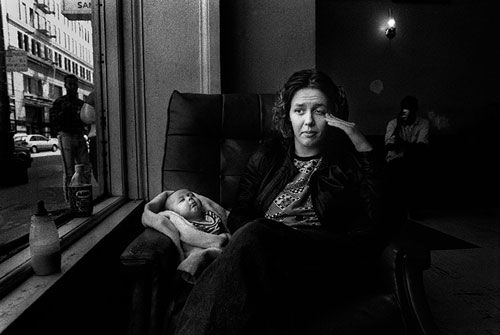
I almost stopped reading this about halfway through because she wouldn’t stop having children, but it’s worth sticking it out until the end. (via dooce)

That’s an image produced by Chris Kotsiopoulos from photographs he took over a 30-hour period near Athens, Greece. Here’s some more information on how this stunning image was made.
After many, many hours in the cold and in the darkness one of the most challenging parts is not to kick the tripod!
From Life magazine circa 1971, a selection of photos of rock stars (Jackson 5, Eric Clapton, Elton John, Grace Slick) with their parents taken in their parents’ homes. Here’s Eric Clapton with his grandmother.
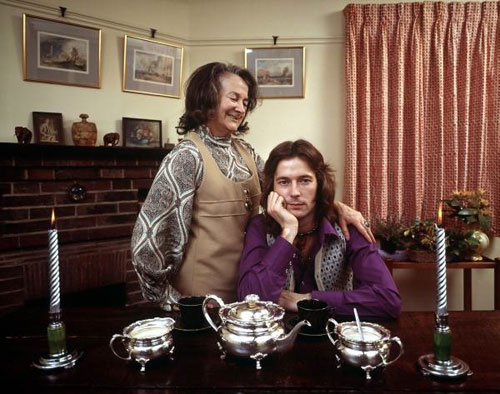
That same series also contains the great photo of The Jackson 5 astride their scooters. (via andrea inspired)
Looks like Bill Cunningham New York will be showing around the US starting with New York on March 16th. (Film Forum!) And hark, a trailer.
If you don’t take money, they can’t tell you what to do. That’s the key to the whole thing.
As I mentioned on Twitter, we got Ollie a camera for Christmas and set it up to post automatically to Flickr. He loves it so far, and it’s been fascinating to see how he sees the world…which is mostly low-angle and mundane. The account is private, but here are a few of my favorite shots of his:
Ollie’s great grandpa
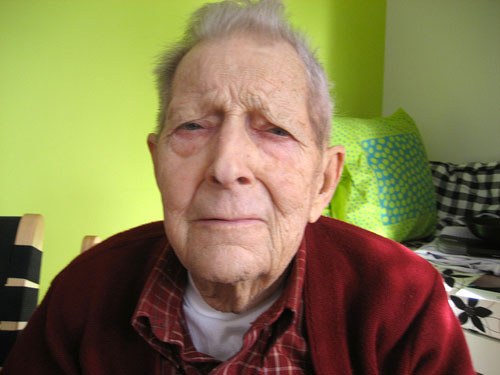
Looking out the door (note the low angle)

Making espresso

But often the camera is a tool for him. Yesterday morning we were trying to build a boat out of blocks…”the same as we built last week,” Ollie said to me. I couldn’t remember how we’d built the boat last week and Ollie couldn’t really describe it or duplicate it by himself. “We should have taken a picture of it. Then we would remember,” he said. And a couple of weeks ago, his toy computer (basically a glorified Speak N’ Spell) ran out of batteries and when he came running in to the kitchen to tell me, he held up his camera with a photo of the computer in question, “see Daddy, the screen’s not working”…as if I wasn’t going to take his word for it.
After I tweeted about the camera, a number of people asked what setup we were using. We had an old Powershot SD450 laying around, so we gave him that instead of buying a kids camera. Ollie’s three and a half now and pretty conscientious; he doesn’t throw stuff around or smash things so we figured we could trust him with an actual camera. And for the most part, he’s been really good with it. He puts the cord around his wrist so the camera won’t fall on the floor if it slips out of his hands. For the first few days, he was accidentially sticking his fingers in the lens area and that caused the little shutter that covers the lens when the camera is off to stick a little bit, but he stopped doing that and learned how to fix the sticky shutter himself. He sometimes gets stuck in a weird menu after pushing too many buttons, but mostly he knows how to get in and out of the menus. He knows how to use the zoom and can shoot videos. He also can tell when the battery is running out and knows how to remove the battery to recharge it. Giving an “adult” camera to a three-year-old may seem like a recipe for confusion and broken electronics, but I’m continually amazed at kids’ thirst for knowledge and empowered responsibility.
For the automatic uploading to Flickr, we put an Eye-Fi card in the camera. The Eye-Fi is a regular SD memory card with built-in wireless networking…the low-end 4GB card is only $45 on Amazon. And you can link the card to a Flickr account so that when the camera is on and in range of a trusted wifi network, the photos are automatically uploaded. Pretty simple once you get it set up.
Two and a half years ago, Alan Taylor started The Big Picture at the Boston Globe; he basically ran the site in his spare work time as a web developer for the company. Now he’s moving on to The Atlantic, where he will edit a new photo site called In Focus.
I wanted the opportunity to do this — telling news photo stories — as a fulltime job, and the Atlantic has offered that to me, for which I am grateful. I also think the Atlantic is a better overall fit for the type of international, wide-ranging storytelling I’ve practiced over the years. The Globe has been a good home and a great platform for over 425 entries since 2008 and I am truly grateful, but I’ve chosen to move on now, and really hope you’ll come along and see what I’m up to. I feel very fortunate for what I’ve been able to accomplish to date, and for the opportunity given to me now. I really can’t believe this is going to be my fulltime gig!
Smart move by The Atlantic, which is increasingly looking like one of the media properties that may make a smooth-ish transistion from print to online/app media. As for The Globe, well, I don’t think they quite knew what they had there. Eight million page views per month out of nothing with a less-than-maximal effort…that’s the kind of thing you want to encourage if you’re in the media business.
My pal Mouser has started a sand collection and is using a macro lens to take photos of each sample. This sample was collected in Hawaii.
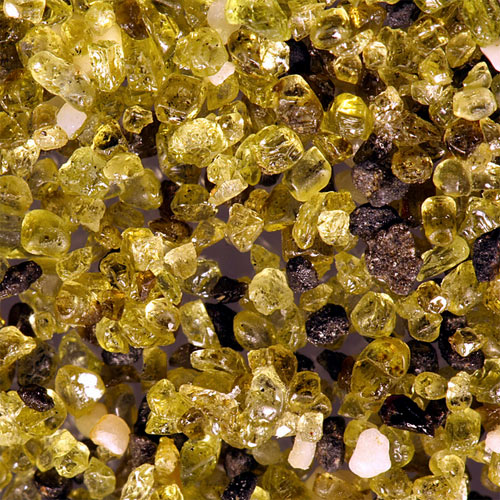
The green grains are olivine, the black are basalt, and the white are possibly bits of shell. Green sand is reasonably rare; the southern tip of the big island of Hawai’i is the most common place to get it.
Don’t miss the star sand. And in this shot, you can see fossilized shark teeth.
If you want to add to Mouser’s collection, you can send him a small sand sample (about the size of a film canister) here:
Mouser
128 Rover Blvd.
Los Alamos, NM 87544
A really lovely seven-minute documentary about Scott Schuman, aka The Sartorialist.
Watching the concentration, focus, and determination in Schuman’s eyes and body as he walks around looking for photographic subjects immediately reminded me of an elite athlete; that same look was documented at length in Zidane, A 21st Century Portrait. And that’s no accident…what Schuman does is an athletic pursuit as much as anything else. The way he holds his camera while walking, down by his side, slightly behind his back, hiding it from his potential subjects until he sees an opening…he’s like a running back cradling a football, probing for an opening in the defensive line.
The photographs taken of everyone who sat with Marina Abramovic at her The Artist is Present show at MoMA are being compiled into a book called Portraits in the Presence of Marina Abramovic.
Just as Abramovic’s piece concerned duration, the photographs give the viewer a chance to experience the performance from Abramovic’s perspective. They reveal both dramatic and mundane moments, and speak to the humanity of such interactions, just as the performance itself did. The resultant photographs are mesmerizing and intense, putting a face to the world of art lovers while capturing what they shared during their contact with the artist.
Last year I posted about the discovery of an extensive body of photographic work by the previously unknown Vivian Maier. Now, a documentary film is in the planning stages and the producers are asking for funds on Kickstarter.
Vivian Maier’s photographs were seemingly destined for obscurity, lost among the clutter of the countless objects she’d collected throughout her life. Instead these images have shocked the world of street photography and irrevocably changed the life of the man who brought them to the public eye. This film brings to life the improbable saga of John Maloof’s discovery of Vivian Maier. Along with her documentary films, photographs, odd collections, and accounts from people who knew her, we take you on the journey of ‘Finding Vivian Maier’.
Backed it!
sleepycity has tons of photos of some old trains and abandoned Paris Metro stations and tunnels.

(via @bldgblog)
Bad Astronomy lists its top fourteen astronomy photos of the year, including this nearly unbelievable spiral pattern caused by a binary star.
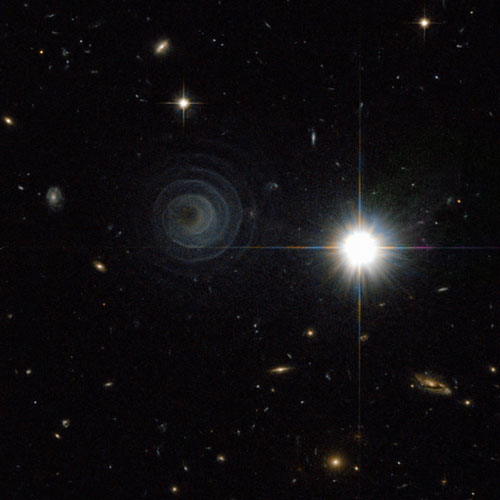
The object, called AFGL 3068, is a binary star, two stars in an 800-year orbit around one another. One of them is a red giant, a star near the end of its life. It’s blowing off massive amounts of dark dust, which is enveloping the pair and hiding them from view. But the system’s spin is spraying the material out like a water sprinkler head, causing this giant and delicate spiral pattern on the sky. And by giant, I mean giant: the entire structure is about 3 trillion kilometers (about 2 trillion miles) across.
Shinchi Maruyama throws water from his hands or from glasses and catches the temporary sculptures they make with his camera.
The Morning News has an interview with Maruyama and a photo gallery of his work; this one is really cool.
The Big Picture has chosen its best photos of the year for 2010. Part one, part two, part three. What a world we live in.
The Museum of the City of New York has put a sizable chunk of their photography collection up on their web site. The interface is a little hinky, but it’s worth wading through. This is 220 Spring St from 1932, from right near Sixth Avenue:
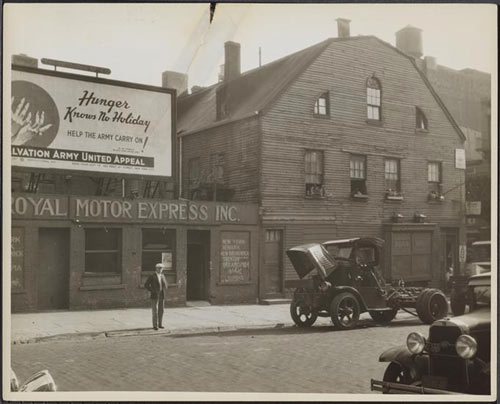
Photo credit: 220 Spring Street by Charles Von Urban. From the Collections of the Museum of the City of New York. (thx, @bamstutz)

The photo is of a Detroit bike shop circa 1912. View it large. Looks like there’s a few motorcycles in there and some records and record players.
From photographer Michael Wolf — you might remember his Architecture of Density or 100x100 projects — a collection of photos of people pressed against fogged-up Tokyo subway windows.

(via coudal)
Just before the famous Abbey Road photo was taken, The Beatles were photographed on the sidewalk waiting to cross the street.
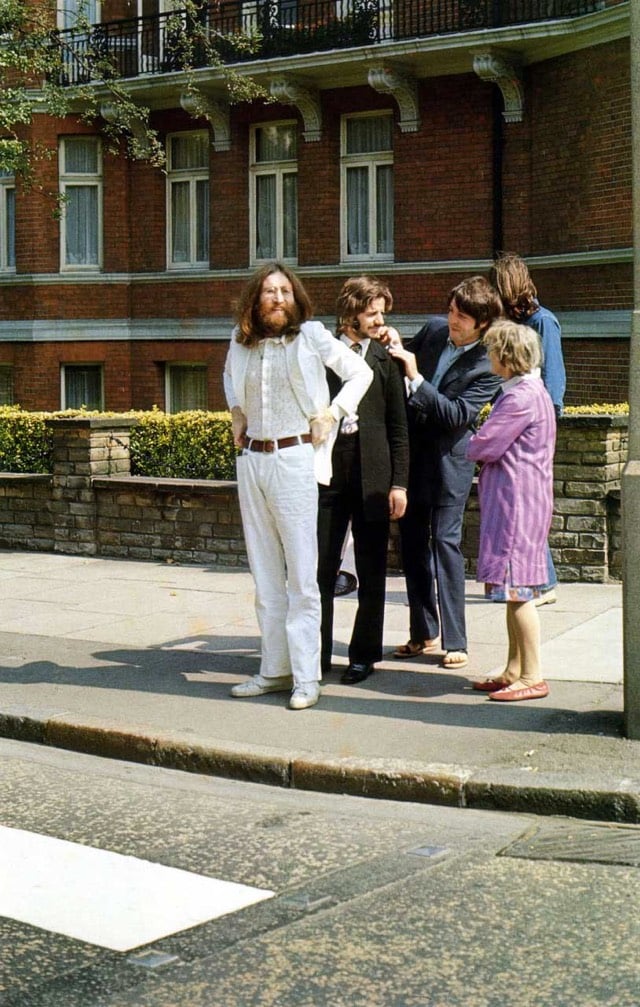
(via matt)
A collection of photos of Dear Leader looking at things: corn, your desktop, wheat.

Actually, I can’t recall seeing a photo of Kim doing anything but looking at stuff. (thx, steve)
The Big Picture has a selection of photos from this year’s National Geographic photography contest. It was difficult to pick a favorite, but I’ll go with this one:

Photographer Sacha Goldberger has his depressed grandmother pose for a series of outlandish superhero photos. The result was very theraputic for the 91-year-old woman.
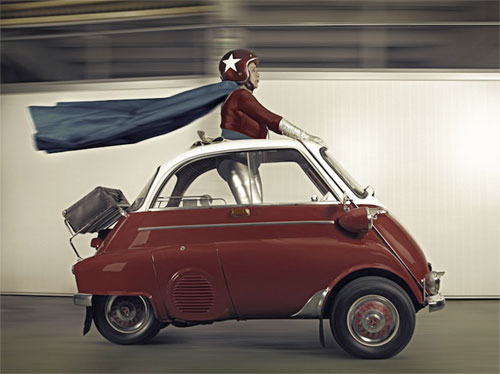
Initially, she did not understand why all these people wrote to congratulate her. Then, little by little, she realized that her story conveyed a message of hope and joy. In all those pictures, she posed with the utmost enthusiasm. Now, after the set, Goldberger shares that his grandmother has never shown even a trace of depression.
(via mathowie)
If you crossed The Sartorialist with The Selby and put the whole thing on a bike, you’d get Downtown From Behind, a collection of photographs of creative people biking the streets of downtown Manhattan, shot from behind.

The NY Times has a photo slideshow of some NYC marathon participants right after they crossed the finish line yesterday. Why don’t any of them look exhausted?
Mosaic collages like this one — where each “pixel” is a tiny self-contained image — are fairly common but I haven’t seen too many like these before:

Lovely effect; they’re fun to look at zoomed in or out. (via matt)
One hundred photos from one hundred photographers, including those from Noah Kalina, David Maisel, Zoe Strauss, Phillip Toledano, etc. (via kalina)
Stay Connected